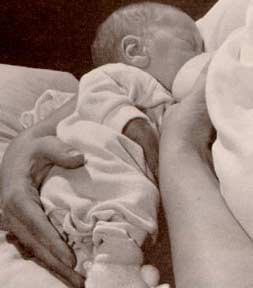Research on Compounds that Prevent HIV Transmission through Breast Milk.
 |
| Compounds containing sugars in breast milk may reduce the transmission of HIV from mother to child (Photo: nutritionnc) |
Recent research from a laboratory has revealed that compounds containing sugars in breast milk may reduce the transmission of HIV from mother to child. This study does not imply that HIV-positive mothers should breastfeed, as the virus can still be transmitted through this route! However, if successful in the future, this discovery could open a new hope for preventing sexual transmission of HIV.
For a long time, we have known that breast milk contains several compounds that combat the HIV virus. Louise Kuhn, a researcher on HIV transmission at Columbia University, New York, stated: “Breast milk contains a multitude of beneficial agents, such as maternal antibodies.”
Bill Paxton and colleagues at the University of Amsterdam have focused their research on HIV-fighting compounds in milk that they believe have specific potential. The authors suggest that the secret compound is Lewis X, a type of sugar also found in saliva and blood.
Preventing Binding
HIV infects and destroys CD4+ T cells, which are a crucial component of the immune system, leading to AIDS. According to researchers, the reason HIV can invade CD4+ T cells is that it binds to another type of immune cell known as dendritic cells.
Paxton’s team discovered that HIV could not bind to dendritic cells if the Lewis X compound is already bound to a specific protein on the surface of the cells. Dendritic cells are primarily concentrated in the tonsils, allowing them to easily interact with the abundant Lewis X compounds present in breast milk during breastfeeding.
In some tested samples of breast milk, the milk was able to prevent HIV from adhering to cells, even when diluted 500 times. The research was published in the Journal of Clinical Investigation.
Risk Analysis
Although this discovery opens up significant prospects, there is a warning from David McDonald, a virologist at Case Western Reserve University in Cleveland, Ohio: “If this is an obvious fact, then why are there still children infected with HIV from breast milk?” According to UNICEF reports, approximately 200,000 infants are infected with HIV from their mothers each year. Between 10% and 20% of infants contract HIV from their mothers after breastfeeding for two years.
Paxton challenges this argument, believing that without this protective compound in breast milk, the number of infected children would be much higher.
Public health experts continue to debate the risks and benefits of breastfeeding for infants from HIV-positive mothers. However, the World Health Organization still recommends that mothers with AIDS use substitutes when possible.
A Starting Point
Paxton is planning to study mothers who may reduce the spread of HIV due to high sugar content in their milk. “This is not an easy task,” he said, “partly because the ethical demand is to protect infants from HIV infection by any means possible.”
Paxton’s primary goal is to find a substance that can prevent HIV, which can be used to eliminate HIV before it enters the body (a germicidal agent). This could take the form of a gel or a foam cream designed to prevent HIV transmission through vaginal intercourse. Experts believe that women prefer using germicidal agents over condoms, which require cooperation from partners. Perhaps, in the future, a dose of “sugar molecules” will be incorporated into the aforementioned gel or foam cream mixture.
McDonald hopes, “If it can act as a germicidal agent, this would be a wonderful tool.”




















































